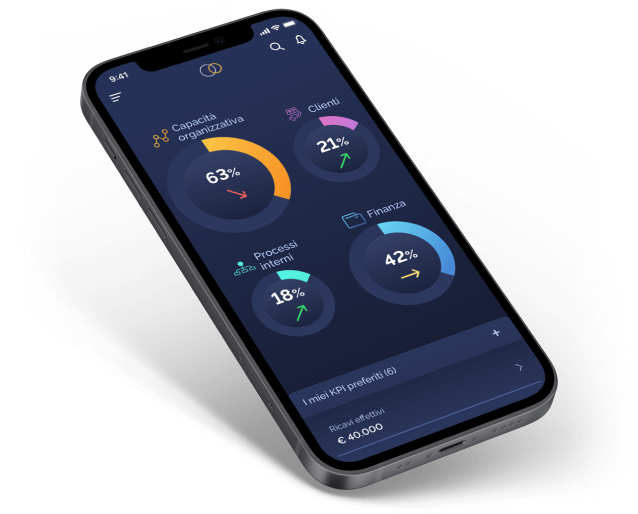
With the collective sum of global data already in the zettabyte range (10 to the power of 21, or 1,000,000,000,000,000,000,000 bytes—a number challenging even to imagine) and expectations of further exponential growth, organizations are hungry for actionable insights that will help reduce operational costs, increase sales, and bring products to market faster.
Certainly, there is no shortage of data to drive operational insights. The International Data Corporation (IDC) predicts that the five-year Compound Annual Growth Rate (CAGR) for all data created and consumed globally will grow by 26% until 2024.
“The amount of data created in the next three years will surpass that created in the last three decades.”
From 2010 to 2020, global data increased from 1.2 trillion gigabytes to 59 trillion gigabytes—an incredible leap of 5,000%. How can this vast amount of data be made usable? Is there a system to translate it coherently into the spoken language of the owning company? What purpose can it serve in guiding the company toward a successful future?
Beyond “Blind Data”
If companies are so rich in data, why do most of them continue to operate blindly? The reason is that true insights don’t come from isolated or intermittent data points.
However, unfortunately, this is the current state of most business data operations. As early as 1988, a visionary management scholar, Russel Ackoff, one of the fathers of “system thinking,” in his DIKW model, defined the standard for the data analyst’s activity. This process involves increasing rationalization, from data collection to the development of predictive knowledge (Wisdom), aimed at enhancing predictive capacity based on increasingly accurate datasets.
Back then, information technology was lacking, so there were no current ERP systems or Business Intelligence tools. Today, these systems are available, but it has been realized that querying an ERP through a business intelligence tool is not enough.
“The results of an ERP do not represent the complete picture without the appropriate business context and frame.”
Companies of all sizes need contextualized answers to questions about order status, production capacity, warehouse backlogs, and logistical updates, where “contextualizing” means aligning day-to-day operational performance with the execution of an overall corporate strategy. To do this, data must be transformed into knowledge. Quickly.
“Companies need answers to these questions in real-time, not post-event reports collected by corporate analysts.”
Post-action control without directional control is useless. Managing all this information through ERP has become too complex, whereas the watchword should now be “simplification.”
What is needed is continuous intelligence, a so-called continuous intelligence that Gartner considers a “top technology trend,” to help organizations react quickly to changing market dynamics and keep up, or even better, beat the competition.
An example of this is Thauma, a new digital tool that aligns well with each of these needs.
Guiding a company through continuous intelligence
Getting answers to key questions about operations and business performance can be challenging for most companies. Data is buried in highly complex systems (ERP) that are not easily accessible and usable for high-level users, CEOs, and the C-suite. To complicate matters, data may reside in multiple systems, each using different nomenclatures and data models.
A departmental system that handles personnel, one for purchasing, for warehouses, for sales, distribution, and assets. Often, there are too many different systems, making it difficult for them to communicate with each other, making it challenging to link data from each business department into a complete, coherent, and meaningful framework.
The CEO, who has the task and ultimate responsibility of making decisions based not only on experience and intuition but also on the evidence of data, must be able to view them in a simple and autonomous way. This allows every discussion with his C-suite colleagues (CFO, marketing and sales, production and logistics, R&D) to make use of widely shared information.
It’s the case for Thauma, a continuous intelligence model that transforms data into useful insights for business leaders.
The “continuous intelligence” approach allows the CEO to relate typical operational problems to the overall framework of strategy execution and address and solve them with greater chances of success:
- Identify and correct deficiencies and delays in products by assessing their impact on sales targets
- Address bottlenecks in the supply chain in the overall context of customer service and achievement of economic results and adherence to production and sales budgets
- Remove excess inventory, achieving the goal of obtaining the cash flow needed to finance development
- Eliminate unnecessary purchases (“maverick spending”) and production, improving overall profitability
Thauma’s data processing
To achieve continuous intelligence, organizations need a “context-rich” data-information-knowledge model, which is not specialist-functional but has a “holistic,” global view and a level of abstraction that can transform complex and often “arcane” ERP data into usable information that the management can quickly exploit with simple and intuitive searches.
Closing the picture comes through the integration and connectivity between applications, data platforms, and databases, combined with process automation, to streamline complex data transactions and close the cycle from analysis to action without the burden of repetitive manual processes and potentially inaccurate data entry.
“For all those executives and CEOs leading business innovation and transformation, it’s time to consider an alternative approach to seeking an authentically data-driven decision-making process.”
There are three main components of a company engaged in continuous intelligence that the company should consider when identifying or designing solutions and systems to improve its processes:
- Data Model: Integrates a data model that integrates them into the company’s overall context.
- Data Democratization: Brings data closer to an intuitive way of reading it, to enable a faster and deeper decision-making process.
- Data Automation: Leverages capabilities to bridge the gap between data and insights to act.
The results of this solution that Thauma offers are clear: continuous intelligence unlocks the hidden data in the depths of business systems, turning them into that corporate “oil” that fuels the decision-making work of the CEO and the C-suite.
Let’s be clear on this point. In the famous spaghetti western “For a Few Dollars More,” at one point the villain Ramon quotes a Mexican proverb “when a man with a gun meets a man with a rifle, the man with the gun is a dead man.” Here one could paraphrase: “when a CEO with only intuition meets a CEO with intuition and information, the one with only intuition is a dead CEO.
Therefore, no misunderstandings, the leadership firmly remains in the hands of the CEO! For this reason, Thauma, modifying Ackoff’s original, ‘detaches’ the top of the DIKW pyramid, Wisdom, from the three underlying layers. In fact, the CEO’s wisdom is the result of the appropriate use of knowledge about the world, built on experience and personal qualities and attitudes that are acquired only on the ‘battlefield.’
“This is Thauma’s mission.”
Thauma tracks and identifies the main KPIs (Key Performance Indicators), organizes them into a dashboard useful for the CEO to navigate through all the key metrics and discover how they vary in real-time. A unique access method to the depth of the company, thanks to the support of continuous intelligence, which isolates and highlights all the most useful information.
Thauma is simply the world’s first Digital Performance Intelligence tool.







